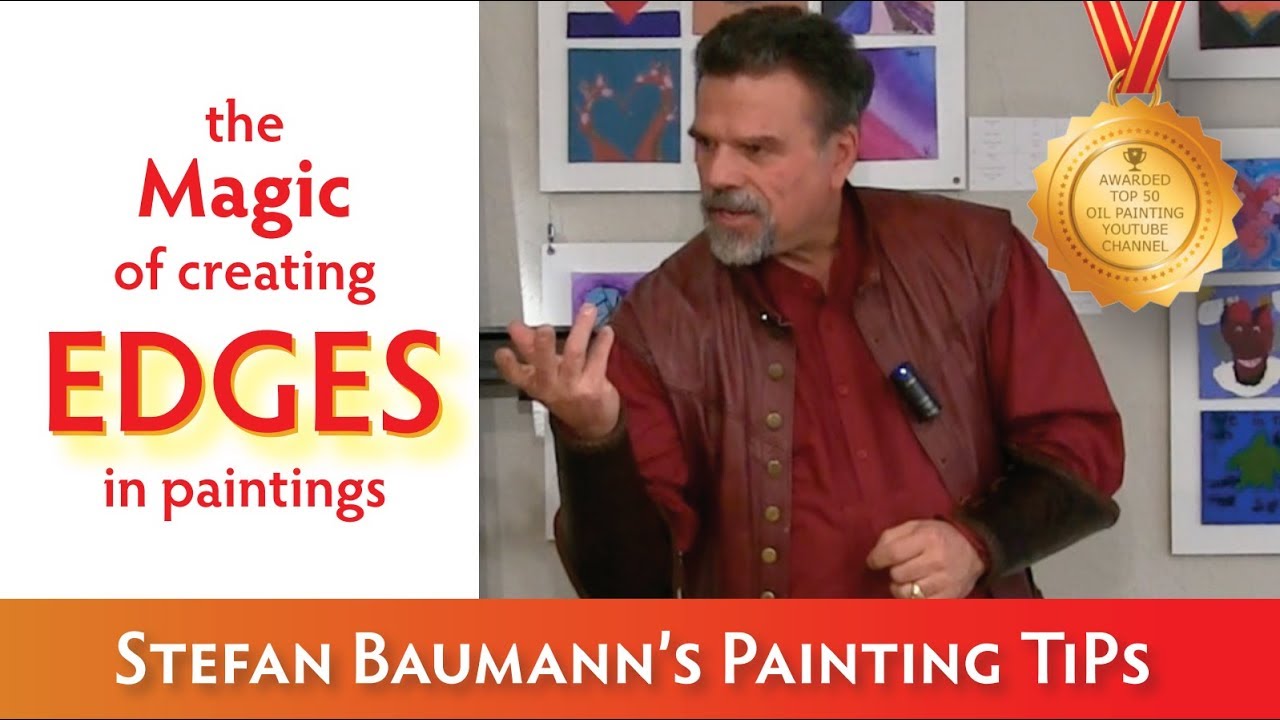In this video, Plein Air Artist Stefan Baumann Discusses abount The Magic of Creating Edges in Your Paintings and why the artist should know about them.
If you are interested in coaching call Stefan 415-606-9074
Get Stefan Baumann’s free Book at his website www.StefanBaumann.com.
Painting – The Magic of Edges
Edges are one of the fundamental elements
In my Painting workshops in Mt Shasta offered in the spring and fall, I include a lecture of the 12 Key Rules that an artist must know to create a masterpiece. Edges are one of the fundamental elements included in my list of the 12 Insights that artists need to know. I would put Edges in the top five. How an artist uses edges in a painting is so important that it can make or break a painting. Yet, little is discussed about why some edges are sharp and other edges are not.
To understand edges one must understand how we see. The human eyes can only see one thing at a time, and that thing is limited to being about the size of a silver dollar. In photography, it is called the depth of field. It is the distance between the nearest and farthest objects in a scene that appears to be acceptably sharp in an image. For example, when we look at a face we usually focus on the eyes. Eyes are set 1 1/2 inches apart and are six inches total. Generally, we focus on just one eye. You are aware of this when you are talking to someone with a lazy eye. You feel yourself going from one eye to the other trying to figure out what eye to look at. In a painting, a focal point is the area of focus and the edges in that area should have hard edges. Everything out of that area should be
painted with soft edges. This is how artists recreate how the human brain sees things. Yes, as an object gets farther from you, it gets softer. There is so much more to understand about edges and what they can do for you when you create a Grand masterpiece.
Edges or the quality of line also defines the speed that a viewer looks at a painting. An artist can manipulate the viewer’s speed at which he looks at a painting by using a sharp line, which makes the viewer eyes move quickly throughout the painting causing the experience to be short. A softer or defused line allows the viewer to slow down and even stop as he or she ponders the sensitivity of the line. A line that has varying degrees of hard and soft edges makes the viewer much more interested in participating in the experience of your painting.
Edges also create feelings that the artist can relay to the viewer to increase the experience. When we think of an image that is in high definition, the experience can be defined and harsh with little is left to the imagination, and the experience is one of a quick response. However, a painting painted with soft lines allows the viewer to melt and settle down for a while and relax, enjoying the moment of the line as it travels back and through the painting.
Edges also create depth and a sense of three dimensions in your work. If we paint as we see, the sharper the lines are nearest to the viewer makes the viewer see the object up close with detail. When the object retreats back from the viewer, the object’s edges soften
and often can disappear. This will create the effect that the object is further away and will give the viewer the experience of 3D.
To develop a better understanding of how edges and brushstrokes work together and how to create better edges, a good exercise is to paint a simple subject in a very limited amount of time. I recommend using a 9×12 canvas and one or two medium brushes. An a la prima painting usually is completed in about 2 hours from start to finish. In
order to work with edges, you must work wet on wet. Paint everything without being concerned about the edges first. Make sure you create a strong focal point with hard edges. {See Campfire Chats on focal points and how to understand them. This will be the topic of our discussion in future Campfire Chats, so look for it.}

